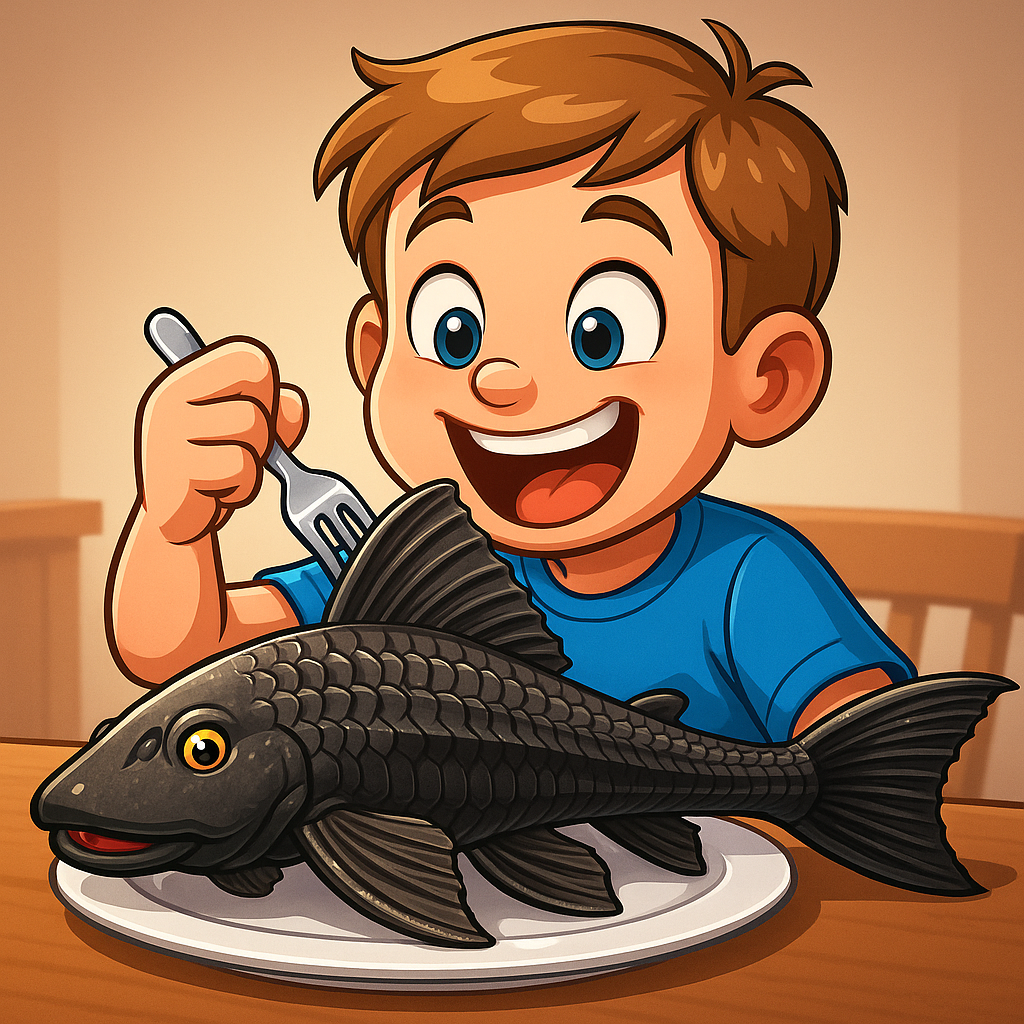Do people in South America eat plecos?
🍽️🐟 Do people in South America eat plecos?
Yes. In parts of the Amazon and Orinoco, plecos (family Loricariidae) are traditional food fish—handled and served much like other catfish.
🗺️ Local Names
- 🇧🇷 Brazil: bodó, cascudo (also acari)
- 🇵🇪🇪🇨 Peru & Ecuador: carachama
- 🇨🇴 Colombia: cucha, corroncho
🧬 Common genera: Pterygoplichthys, Hypostomus, Pseudorinelepis, and other armored catfish.
👨🍳 How They’re Prepared
- 🔥 Grilled/Roasted whole: Armor chars; meat is flaked out from between plates.
- 🍲 Soups & stews: Whole fish simmered with aromatics; often served with yuca (cassava) or plantain.
- 🌿 Leaf-wrapped (maito style): Seasoned, wrapped in large leaves, then grilled/steamed.
- ✂️ Strip/fillet cuts: Armor split with heavy shears; side/tail meat removed for frying or stewing.
🐟 Taste & Texture
- 🥩 Lean, mild, fairly firm
- 🦴 Low yield vs. scaleless catfish due to heavy armor & bones
🧰 Handling & Prep Tips
- 🧤 Gloves/towel: Watch sharp dorsal & pectoral spines
- 🚿 Rinse well; eviscerate promptly if cooking whole
- 🔪 Score/split armor before or after grilling to access flesh
🌱 Culture, Ecology & Ethics
- 🛶 Traditional river food for many riverside/indigenous communities
- 🌊 Invasive-use cases: In some places, people eat suckermouth catfish to help control populations
- 🧭 Sustainability varies: Species and regional rules differ—follow local guidance
🏠 Hobbyist Notes
- 🚫 Do NOT eat aquarium plecos (possible meds/copper residues; not food-raised)
- 📜 Know the law: Check local capture/consumption regulations and health advisories
📋 Quick Reference (at a glance)
- 🧾 Names: bodó/cascudo (BR), carachama (PE/EC), cucha/corroncho (CO)
- 🍳 Cook: grill whole • stew • leaf-wrap • strip-cut
- ⚠️ Handle: spines ➜ gloves/towel • wet, clean prep
- ✅ Good practice: respect local rules • avoid pet fish for food

Powered by Lightspeed
Display prices in:USD